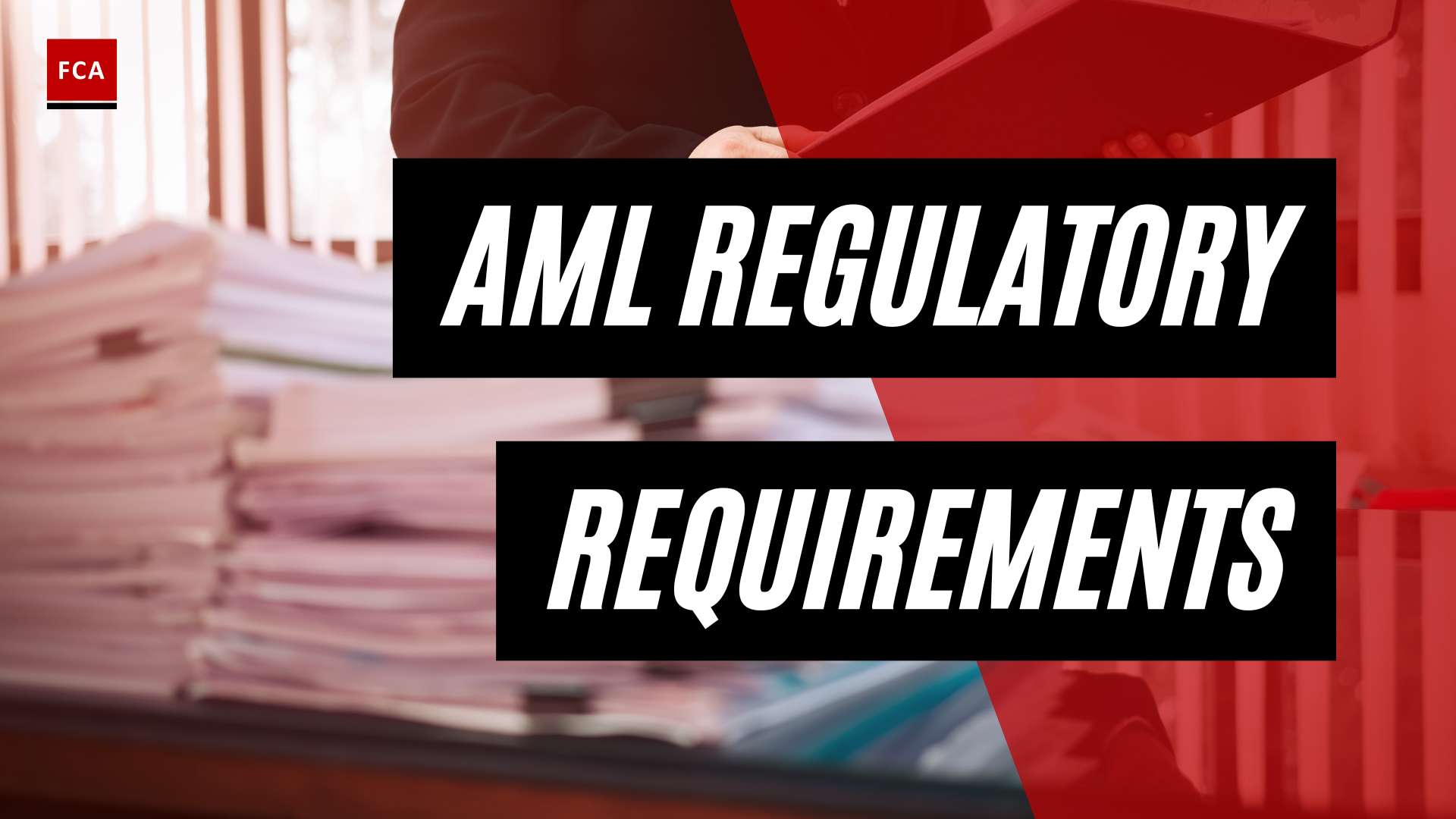Importance of AML Training for Employees
In the fight against money laundering and financial crimes, providing comprehensive anti-money laundering (AML) training to employees is of utmost importance. AML training equips employees with the necessary knowledge and skills to understand regulatory requirements and play an active role in preventing financial crimes.
Understanding Regulatory Requirements
AML training ensures that employees are familiar with the regulatory landscape and requirements pertaining to anti-money laundering. By educating employees about relevant laws, regulations, and guidelines, organizations can create a culture of compliance and minimize the risk of penalties and fines. It is crucial for employees to understand their obligations, such as customer due diligence, reporting suspicious activities, and complying with AML regulations.
Preventing Financial Crimes
Effective AML training for employees plays a key role in preventing financial crimes, including money laundering and terrorism financing. By providing employees with the knowledge of red flags and indicators of suspicious activities, organizations can empower them to identify and report potential money laundering activities. This proactive approach strengthens the overall AML compliance efforts of financial institutions and helps protect them from risks and regulatory violations.
Comprehensive AML training programs educate employees about the various typologies and techniques employed by money launderers, enabling them to recognize and respond to potential threats. This knowledge equips employees with the tools needed to detect and prevent illicit financial activities, contributing to the overall integrity and security of the financial system.
By investing in AML training for employees, organizations experience numerous benefits. These include mitigating compliance risks, enhancing operational efficiency, and boosting employee morale. Studies have shown that organizations that provide AML training not only reduce the likelihood of non-compliance penalties and fines but also foster a culture of compliance, where employees actively contribute to safeguarding the organization’s reputation and integrity (Financial Crime Academy).
To ensure the effectiveness of AML training, it is crucial to continually update and tailor the training programs to the specific roles and responsibilities of employees. Ongoing education helps employees stay informed about the latest trends, typologies, and regulatory changes in the field of anti-money laundering. This continuous learning ensures that employees remain vigilant and capable of identifying emerging risks and vulnerabilities within the financial system. Organizations should also consider refresher courses and advanced training to reinforce the knowledge and skills acquired during initial training.
By prioritizing AML training for employees, organizations demonstrate their commitment to combating financial crimes, protecting their reputation, and safeguarding the integrity of the financial system. Regular and targeted training programs empower employees to be proactive in identifying and preventing money laundering activities, thereby strengthening the overall compliance efforts of the organization.
Benefits of AML Training
AML training for employees is crucial in ensuring compliance with regulatory requirements and preventing financial crimes. Organizations that invest in comprehensive AML training programs experience significant benefits that extend beyond mere compliance. Let’s explore some of these benefits in detail.
Mitigating Compliance Risks
Organizations that provide AML training to employees decrease the likelihood of non-compliance penalties and fines. By equipping employees with the necessary skills and knowledge, they can identify, prevent, and report suspicious activities related to money laundering and terrorism financing (AML UAE). A study has shown that organizations that offer AML training foster a culture of compliance, where employees understand the importance of combating financial crime and actively contribute to safeguarding the integrity and reputation of the organization (Financial Crime Academy).
Enhancing Operational Efficiency
AML training plays a vital role in enhancing operational efficiency within an organization. When employees are well-versed in AML regulations and best practices, they can efficiently execute their roles and responsibilities. By understanding how to identify and mitigate potential risks, employees can streamline processes, minimize delays, and ensure that transactions comply with regulatory requirements. This results in a more efficient and effective operation overall.
Boosting Employee Morale
Providing regular AML training to employees not only safeguards financial institutions from monetary losses but also contributes to the overall integrity and stability of the financial system. When employees receive proper training, they gain confidence in their ability to handle financial transactions and prevent financial crimes. This boosts their morale and instills a sense of pride and responsibility in their role within the organization. Employees who feel empowered and knowledgeable are more likely to be engaged, motivated, and committed to upholding compliance standards.
By investing in AML training for employees, organizations can mitigate compliance risks, enhance operational efficiency, and boost employee morale. This not only ensures regulatory compliance but also contributes to a culture of integrity and responsibility within the organization. To learn more about AML training requirements and programs, visit our article on aml training requirements.
Elements of Effective AML Training
To ensure the effectiveness of Anti-Money Laundering (AML) training for employees, certain key elements must be incorporated into the training programs. These elements include tailoring the training programs and providing ongoing education and updates.
Tailoring Training Programs
AML training programs should be tailored to the specific roles and responsibilities of employees within the organization. Different departments may face varying risks and encounter unique money laundering scenarios, highlighting the need for targeted training programs that address the distinct challenges faced by each employee. For example, training for accountants may focus on identifying suspicious financial transactions, while training for lawyers may emphasize the importance of client due diligence and reporting obligations.
By customizing the training content to reflect the position of individuals involved in AML processes, such as reception staff, solicitors, managers, and compliance officers, organizations can ensure that each employee receives the necessary knowledge and skills to fulfill their specific AML responsibilities. This targeted approach enhances the relevance and effectiveness of the training, enabling employees to better identify and prevent potential money laundering activities.
Ongoing Education and Updates
Effective AML training requires a commitment to ongoing education and updates. The regulatory landscape, money laundering tactics, and technological advancements are constantly evolving. Therefore, it is essential to provide employees with continuous learning opportunities to keep pace with these changes and ensure they remain vigilant and well-equipped to combat financial crimes.
Regularly updating the training materials and delivering refresher courses help reinforce the knowledge and skills acquired during initial training. This ensures that employees stay informed about the latest regulations, emerging risks, and best practices in AML. By providing ongoing education, organizations foster a culture of compliance and empower employees to actively contribute to the protection of the organization’s integrity and reputation (Financial Crime Academy).
Moreover, new staff induction and material changes to the AML regime or internal policies can serve as trigger points for reviewing and updating AML training sessions within a firm. These updates ensure that all employees receive the necessary training to comply with the latest requirements and address any emerging risks (Jonathon Bray).
By incorporating these elements into AML training programs, organizations can enhance the effectiveness of the training, mitigate compliance risks, and equip employees with the knowledge and skills needed to prevent and detect potential money laundering activities. Continuous improvement and adjustments to the training approach based on feedback and emerging risks are vital to ensure that the training remains relevant and impactful in the ever-changing landscape of AML.
AML Penalties and Fines
Ensuring compliance with anti-money laundering (AML) regulations is of utmost importance for businesses across the globe. Non-compliance with these regulations can result in severe consequences, including penalties and fines. It is essential for organizations to understand the potential ramifications and adhere to the regulatory frameworks and sanctions in place.
Consequences of Non-Compliance
Financial organizations that violate AML regulations can face civil and criminal penalties. These penalties can vary in severity depending on the nature and extent of the violation. Common consequences of non-compliance include:
- Monetary Fines: Regulatory bodies have the authority to impose monetary fines on organizations that fail to meet AML requirements. These fines can be substantial and can vary based on jurisdiction and the gravity of the violation.
- Imprisonment: In some cases, individuals involved in money laundering or related offenses may face imprisonment. Laws in different countries specify the length of imprisonment based on the severity of the offense.
- Sanctions: Sanctions can be imposed on organizations that violate AML regulations, barring them from conducting business with certain entities. These sanctions can have significant financial implications and damage an organization’s reputation.
Regulatory Frameworks and Sanctions
AML penalties and fines are established by regulatory frameworks specific to each country. Some notable regulatory bodies and frameworks include:
- Bank Secrecy Act (BSA): In the United States, the BSA imposes compliance obligations on financial institutions and includes penalties ranging from fines to imprisonment for AML violations.
- USA PATRIOT Act: The USA PATRIOT Act requires banks and financial institutions in the United States to understand their AML compliance obligations. Failure to comply with these obligations can result in fines.
- Office of Foreign Assets Control (OFAC): The OFAC is responsible for administering and enforcing U.S. sanctions. Violations of these sanctions can result in monetary fines and imprisonment.
- Anti-Money Laundering Directives (AMLDs): The European Union has issued AML directives, with the latest being the 6th Anti-Money Laundering Directive (6AMLD). The 6AMLD introduces stricter penalties and fines, including increased prison terms and larger economic sanctions.
Understanding the regulatory frameworks and sanctions specific to your jurisdiction is crucial for maintaining compliance. By staying informed and implementing robust AML training programs, organizations can mitigate the risk of non-compliance and protect themselves from penalties and fines.
To learn more about AML training requirements and best practices, refer to our articles on aml training requirements and aml compliance training. Additionally, for specific industries such as banks, accountants, regulators, auditors, and lawyers, tailored AML training programs are available to meet their unique needs.
AML Training Best Practices
To ensure the effectiveness of Anti-Money Laundering (AML) training for employees, it is essential to follow industry best practices. These practices include targeted training for different roles and regular refresher courses and advanced training opportunities.
Targeted Training for Different Roles
A well-structured AML training program should be tailored to reflect the specific roles and responsibilities of employees within the organization. Different departments may face varying risks and encounter unique money laundering scenarios, highlighting the need for targeted training programs that address the distinct challenges faced by each employe. For instance, reception staff, solicitors, managers, compliance officers, and other individuals involved in anti-money laundering processes play crucial roles in compliance and should receive training that aligns with their responsibilities and risk exposure (Jonathon Bray).
By tailoring the training content to each role, employees gain a deeper understanding of their specific obligations, the relevant AML regulations, and practical techniques for identifying and mitigating money laundering risks. This targeted approach helps employees apply their knowledge effectively in real-world scenarios, ultimately strengthening the organization’s overall compliance framework.
Refresher Courses and Advanced Training
AML training should not be a one-time event; it should be an ongoing process. In addition to the initial onboarding training, financial institutions should provide refresher courses and advanced training opportunities to reinforce key concepts and ensure that employees stay up to date with the latest regulatory developments. Continuous learning and development are integral to an organization’s overall AML strategy and effectiveness in combating financial crimes.
Refresher courses serve as reminders of essential AML principles and provide employees with an opportunity to refresh their knowledge and skills. These courses can focus on recent case studies, emerging money laundering trends, and updates to regulatory requirements. By keeping employees informed and engaged, refresher courses help maintain a high level of compliance awareness and reinforce the importance of vigilance in detecting and preventing money laundering activities.
Advanced training programs are designed to deepen employees’ understanding of complex AML concepts, enhance their analytical skills, and equip them with the tools to address sophisticated money laundering techniques. These programs may cover advanced transaction monitoring, risk assessment methodologies, or specialized topics such as trade-based money laundering or cryptocurrency-related risks. By investing in advanced training, organizations empower their employees to tackle evolving AML challenges effectively.
By implementing targeted training for different roles and providing refresher courses and advanced training opportunities, organizations can ensure that their employees are well-equipped to navigate the intricacies of AML compliance. This commitment to continuous learning and professional development helps strengthen the organization’s AML framework and fosters a culture of compliance throughout the entire workforce.
Frequency and Timing of AML Training
When it comes to AML training, the frequency and timing of training sessions play a crucial role in ensuring that employees are equipped with the necessary knowledge and skills to detect and prevent financial crimes. The frequency of AML training can vary based on the risk profile of the firm and the specific requirements of regulatory frameworks.
High-Risk vs. Low-Risk Firms
The frequency and content of AML training should be guided by a firm’s risk exposure. Higher-risk firms, such as those involved in conveyancing and complex corporate matters, should have tighter AML controls and more frequent training sessions compared to lower-risk firms. This approach allows higher-risk firms to address the specific challenges they face and focus on areas where the risk of financial crimes is higher.
Higher-risk firms typically conduct auditable AML training on an annual basis, with additional reminders and briefings interspersed throughout the year. This regular training ensures that employees remain up-to-date with the latest regulatory requirements and best practices in combating money laundering and other financial crimes. On the other hand, lower-risk firms may require less frequent formal training sessions, with the traditional guideline being about once every two years (Jonathon Bray).
Trigger Points for Reviewing Training
Within a firm, there are certain trigger points that necessitate a review and potential update of AML training sessions. These trigger points include new staff induction and material changes to the AML regime or internal policies. When new employees join the firm, it is essential to provide them with comprehensive AML training as part of their onboarding process. This ensures that they have a solid understanding of AML regulations and their role in preventing financial crimes.
Material changes to the AML regime or internal policies also warrant a review of AML training. When regulatory frameworks evolve, it is crucial to update training sessions to reflect the latest requirements and guidance. Internal policy changes should also be communicated to employees through updated training sessions to ensure that they are aware of any modifications in the firm’s approach to combating money laundering and other financial crimes.
By reviewing and updating AML training sessions at these trigger points, firms can ensure that their employees remain knowledgeable and well-equipped to address the ever-changing landscape of financial crimes.
To evaluate the effectiveness of AML training, it is important to track and report on key metrics. This allows organizations to measure the impact of training initiatives, identify areas for improvement, and make continuous adjustments to the training programs. By adopting best practices in AML training, firms can empower their employees to play an active role in preventing financial crimes and contribute to a safer and more secure financial ecosystem.
Evaluating and Measuring AML Training Effectiveness
To ensure the effectiveness of AML training for employees, it is essential to evaluate and measure the impact of the training programs. This allows organizations to identify areas of improvement, make necessary adjustments, and ensure compliance with global AML training standards. Two key aspects of evaluating AML training effectiveness are tracking and reporting, as well as continuous improvement and adjustments.
Importance of Tracking and Reporting
Tracking and reporting on the progress and outcomes of AML training programs are vital for assessing their effectiveness and compliance. By monitoring employee participation, completion rates, and performance in assessments, organizations can gauge the level of engagement and knowledge retention. This data can be used to identify any gaps or areas that require further attention.
To facilitate tracking and reporting, organizations can utilize learning management systems (LMS) or other training platforms that provide comprehensive analytics. These platforms can generate reports on various metrics, such as completion rates, assessment scores, and time spent on training modules. This information enables organizations to identify trends, measure the impact of the training, and address any deficiencies promptly.
Furthermore, tracking and reporting can help organizations meet regulatory requirements by demonstrating that employees have received the necessary training. This documentation is crucial for audits and regulatory examinations, as it provides evidence of compliance with AML training obligations.
Continuous Improvement and Adjustments
Continuous improvement is a fundamental aspect of effective AML training programs. It involves regularly reviewing and refining the training content, delivery methods, and strategies based on feedback, emerging risks, and regulatory updates.
Organizations should gather feedback from employees who have completed the training to understand their experience and identify areas for improvement. This feedback can be collected through surveys, focus groups, or one-on-one discussions. By incorporating employee feedback, organizations can make training programs more engaging, relevant, and effective.
Additionally, organizations should stay informed about regulatory developments, industry best practices, and emerging financial crime trends. This information should be used to update and enhance the training content and ensure that employees are equipped with the knowledge and skills needed to prevent financial crimes effectively.
Regularly reviewing and adjusting the AML training program ensures that it remains up to date, aligned with regulatory requirements, and responsive to the evolving nature of financial crimes. This iterative process of improvement contributes to the overall effectiveness of the training and helps organizations stay ahead in the fight against money laundering and other financial crimes.
By prioritizing tracking and reporting, as well as continuous improvement and adjustments, organizations can measure the effectiveness of their AML training programs. This approach enables them to enhance the training experience, reinforce compliance efforts, and empower employees to effectively identify and prevent financial crimes.








